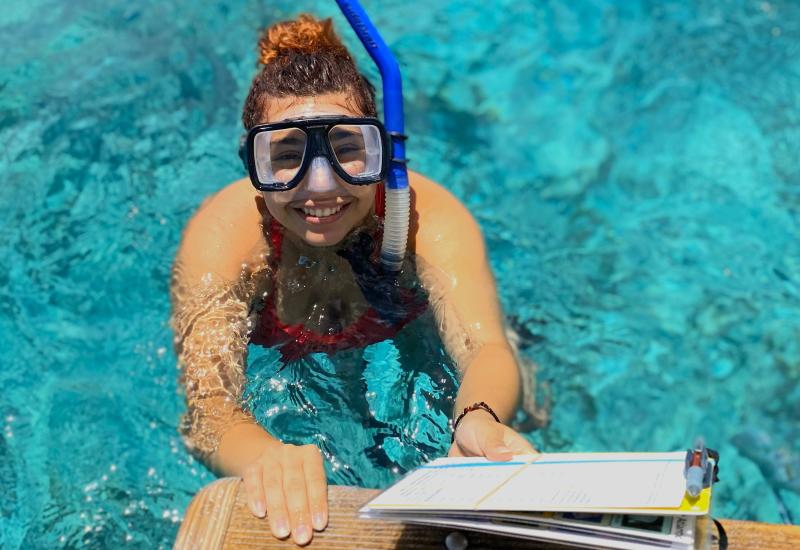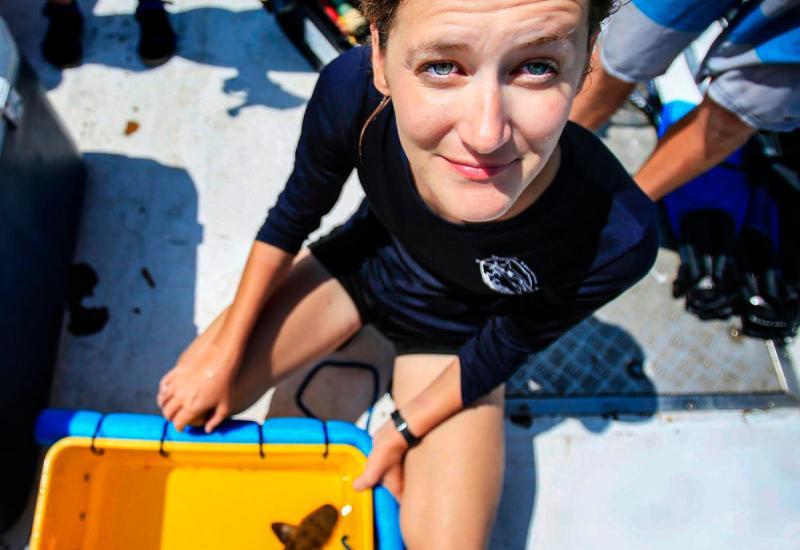Tracking Endangered Whale Sharks with eDNA
Sliding into the deep ocean, I’m accompanied by a small group of snorkelers. Popping my face under the surface, I’m startled to see a cavernous mouth, attached to a dinosaur-sized shark, advancing. My heart thumps, despite knowing that whale sharks are harmless. Like an insignificant spec of plankton, I fin along beside the unfazed, spotty giant for as long as I can. Effortlessly, he finally outflanks me, and I watch the powerful, swishing tail dissolve into blue.
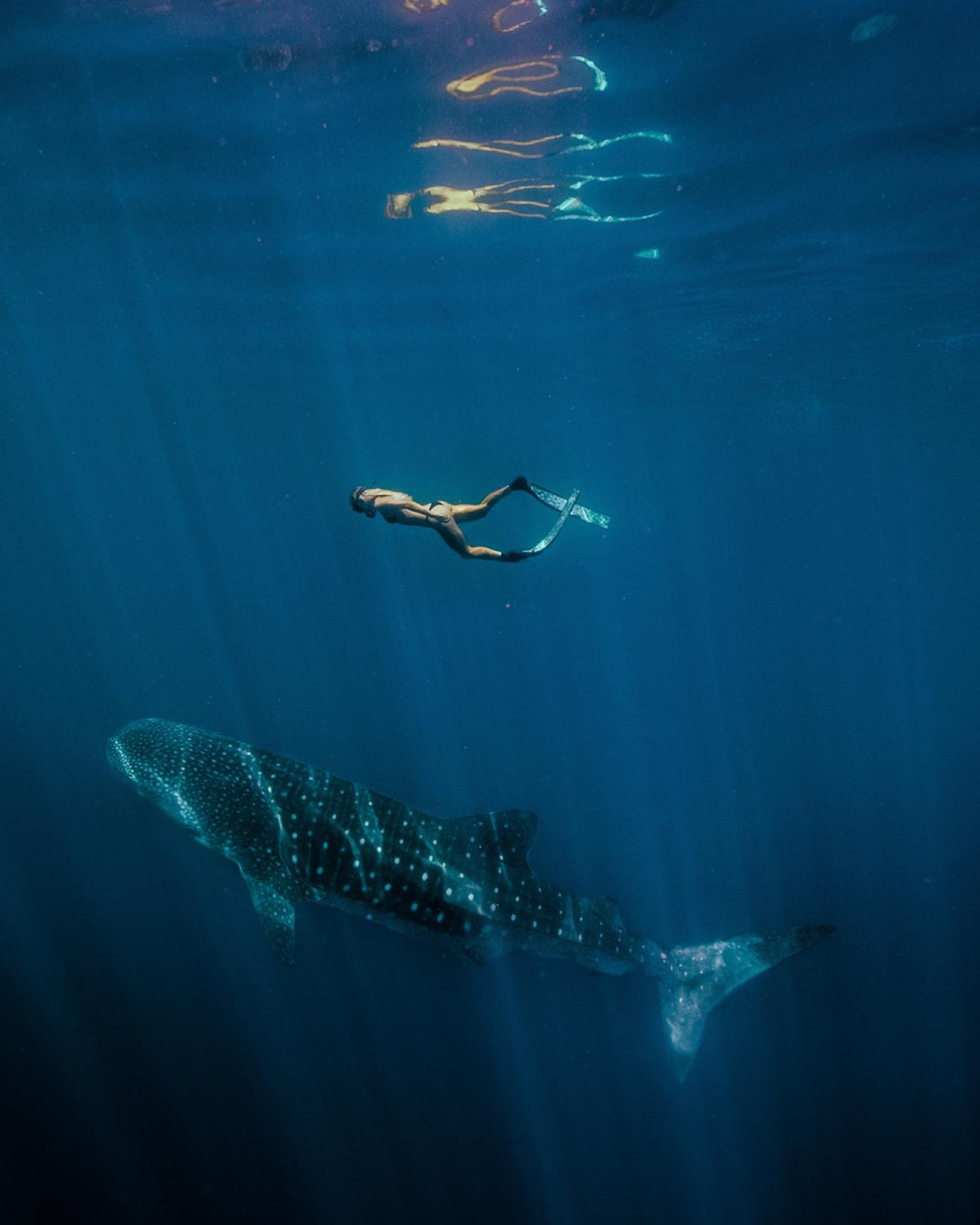
Courtesy Tourism Western AustraliaSwimming with a whale shark at Ningaloo Reef.
Every March to July, an estimated 500 whale sharks migrate to the World Heritage-listed Ningaloo Reef on Australia’s west coast, 750 miles north of Perth, making this the largest whale shark aggregation in the world. Tours begin in the remote, gateway town of Exmouth, home to just 2,500 people. During 2018 and 2019 tourism was estimated to be worth US$126 million, supporting around 950 jobs, and whale sharks are a major drawcard.
Despite the whale shark love, science knows little about them. Puzzlingly, this aggregation is a giant bachelor party, with most of the whale sharks being immature ‘teenage’ males. Where they come from, and where they go remains a mystery.
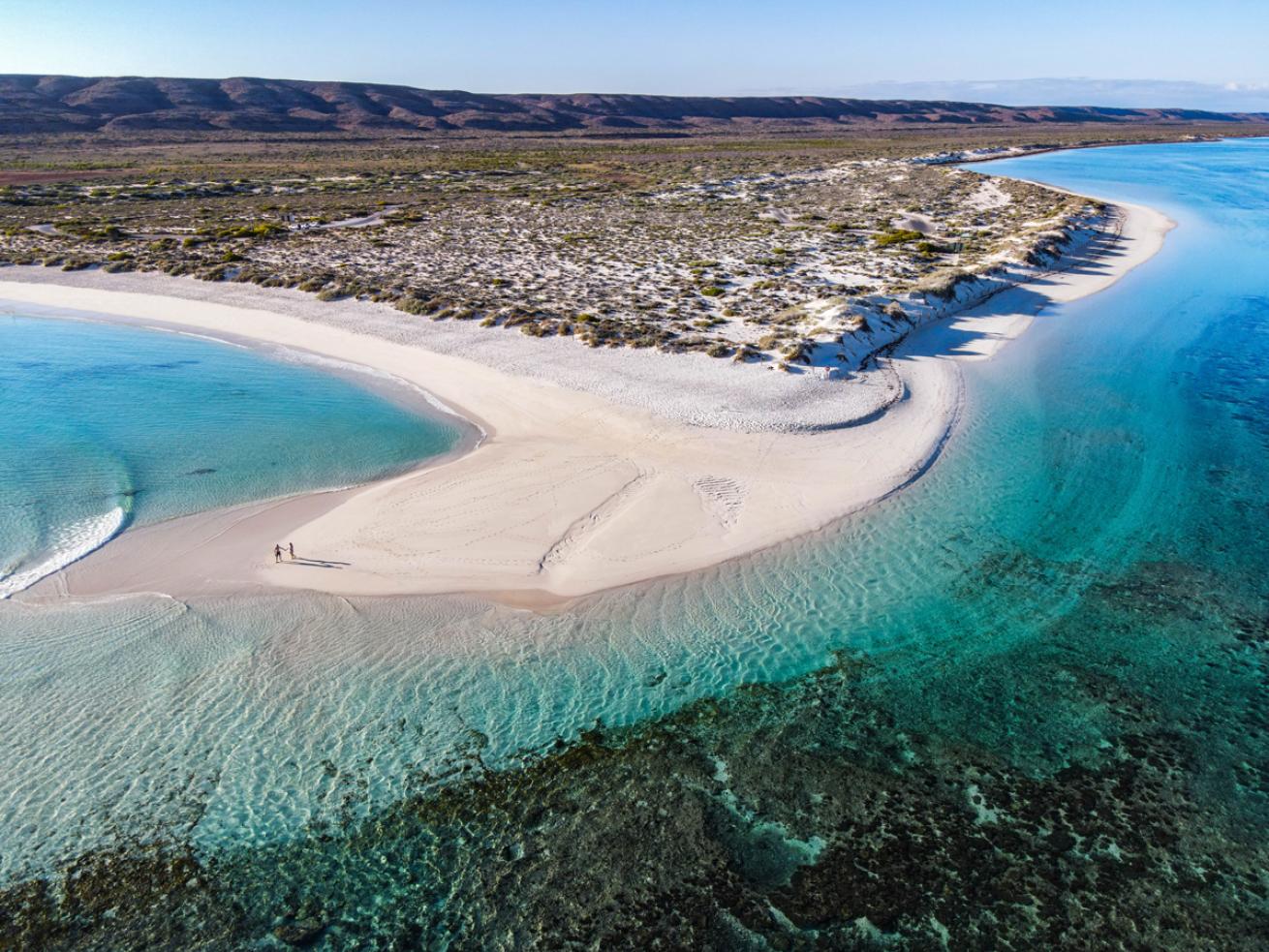
Courtesy Tourism Western AustraliaNingaloo Reef
Abinaya Meenakshisundaram, a PhD candidate in conservation genetics, studies whale sharks through the Australian Institute of Marine Science at the University of Western Australia and hopes to shed light on these mysteries.
“It's a really popular, iconic species,” Abinaya says. “But we don't really know much about its biology or behavior, their movement through our global oceans, and their breeding sites. We need this information to create conservation measures in order to protect the species from extinction, to design legislation or to decide which important regions should be protected.”
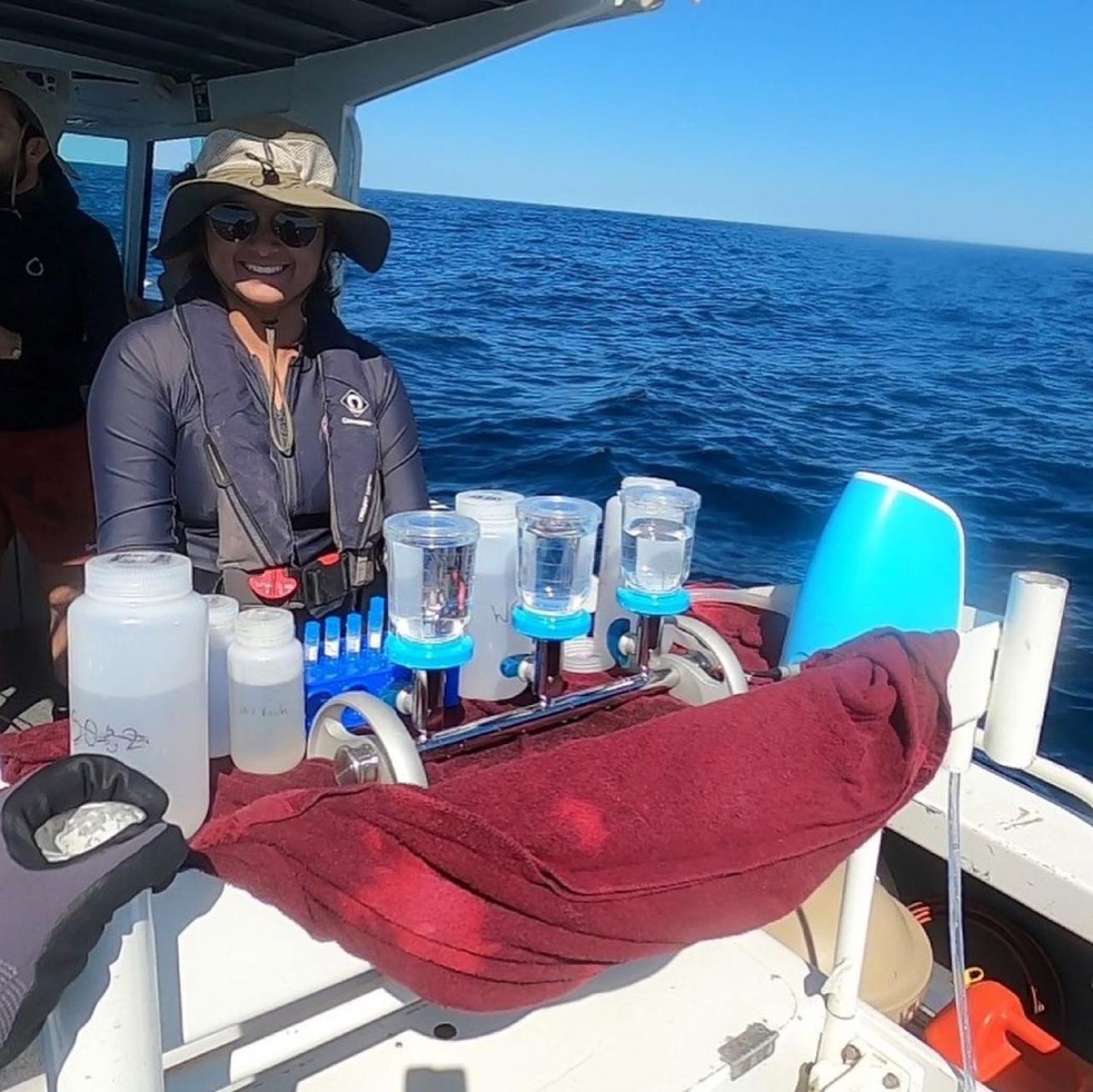
Courtesy Carolyn BeasleyAbinaya Meenakshisurinadaram taking eDNA samples near Exmouth.
This is where the study of environmental DNA (eDNA) can help. Whether on land or in the water, all animals leave behind traces of genetic material, their DNA, in the environment. This may be skin cells, feces, or mucous.
Until now, whale shark genetics have been studied through taking biopsies; small chunks of skin from the living animal. It’s invasive for the animal and labor-intensive and expensive for scientists.
However, in the marine environment, collecting eDNA is as simple as taking samples of sea water. These are filtered and processed in a molecular laboratory, which scans the sample for recognizable sequences of DNA, matching it against species that have been cataloged previously. The technique can detect known species that have passed through the water, and researchers do not have to visually spot the animal.
While eDNA has been used to monitor for the presence of species before, Abinaya’s study represents the first time eDNA has been used to a deeper level — to identify individual animals. The technology is borrowed from a surprising source.
“The field of human forensic science has developed cutting-edge techniques to actually distinguish between the number of individuals as well as to identify certain individuals in a mixed human sample in the crime scene,” Abinaya says. “I'm taking this technique and applying it towards monitoring of a marine species.”
In the future, these methods may be applied to any species in marine or freshwater, making eDNA a game-changer for conservation research. Abinaya’s work is being supported by another eDNA enthusiast, Andrew ‘Twiggy’ Forrest. Often referred to as Australia’s richest man, Andrew is the founder of iron ore mining company Fortescue Metals Group.
Although Andrew has his roots in the outback, he has a passion for ocean conservation, and in 2019 completed a PhD in marine ecology. Andrew says that during his studies, he realized that current techniques for assessing ocean health were far too slow.
“As my PhD demonstrated, no matter how hard everyone works in the world of marine ecology, even if we measured fish for a hundred years, counting dead fish on the back of fishing trawlers, vast eco-statistical studies and underwater cameras would still just be recording the death of the oceans,” he says. “We wouldn't be able to get in front of the wanton, disorganized, industrialized harvesting of the oceans, which is happening now.”
Andrew has an unwavering motivation to drive change, and luckily, deep pockets. Through his philanthropic Minderoo Foundation, Andrew and his wife Nicola Forrest support marine conservation and the study of eDNA.
His pet project is called Oceanomics and seeks to construct a library of ocean species through eDNA. To support this ambitious study, in September 2021 he opened the Minderoo Foundation Exmouth Research Laboratory, right beside Ningaloo Reef.

Courtesy Blue Media ExmouthTeam at Minderoo Foundation Exmouth Research Laboratory.
Amid the state-of-the-art equipment is a genetic laboratory used for analyzing eDNA. The lab’s facilities are also offered to other collaborating researchers who are studying issues such as coral reef resilience to global warming and predicting the occurrence of dangerous jellyfish.
In 2022, Abinaya plans to make use of the new laboratory in Exmouth. Previously, the closest scientific laboratory to where the whale sharks frequent was in Perth, and the proximity of this facility will improve sample quality.
For the Minderoo Foundation team, building the laboratory close to Ningaloo Reef was strategic. Knowledge gained will assist eco-tourism to thrive, including the carefully managed whale shark industry.
"Environmental tourism is the great economic weapon for local communities,” Andrew says. “If they protect their environments, then they become unique in the world."
And it’s this protection of nature that will sustain local incomes for generations to come.


